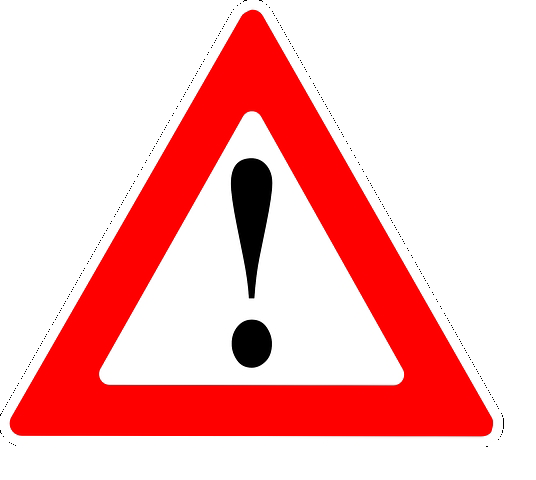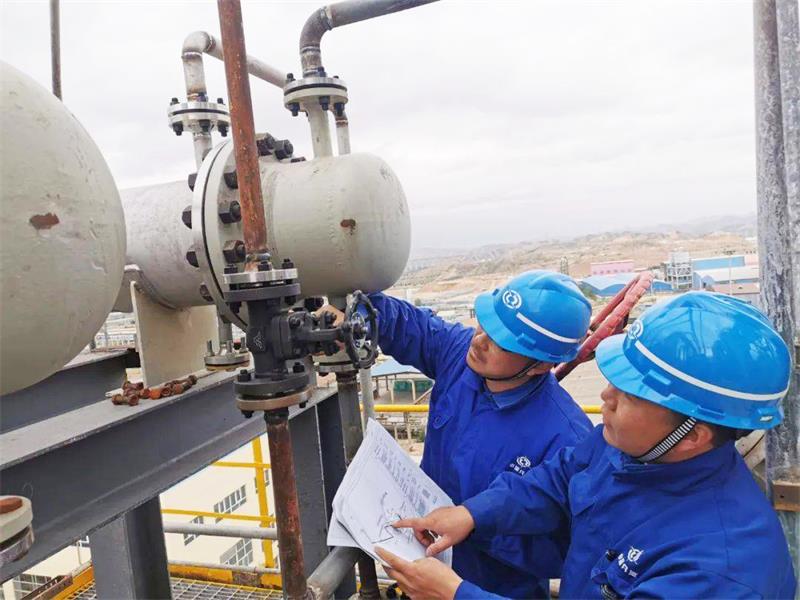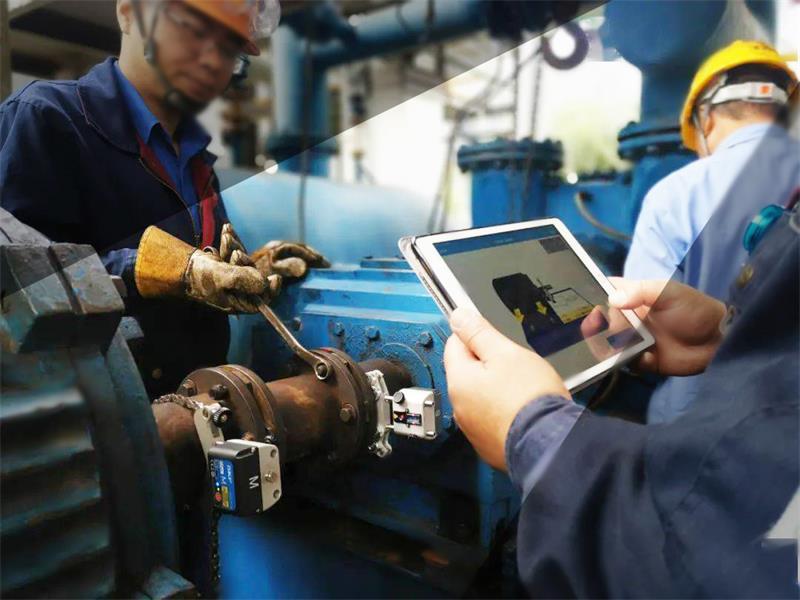Learn - Feb. 10, 2023
Centrifugal pumps are very important dynamic equipment for chemical industry. Zigong Pump & Valve Co., Limited engaged in pump production for 60 years, committed to pump development, production, sales and service. High temperatures, aggressive and containing solid particle fluids – the extreme conditions in the chemical industriy require sophisticated and often complex solutions. Thanks to innovative designs and comprehensive service, chemical pumps from Zigong Pump & Valve maximises performance and reliability.
For the operation and maintenance of centrifugal pumps, we use the most briefly sentences to give end-users the most practical guidance, which is the purpose of the "manual for operation and maintenance of centrifugal pumps".
Centrifugal pumps are divided into stator and rotor two parts. Non-rotating parts called stator, including: suction, middle section, discharge, guide vane, end gland, bearing, etc.; The rotating parts are called rotors, including: pump shaft, impeller, balance plate, balance dics, etc. The core component of a centrifugal pump is the impeller. The pump body, also known as the pump casing, is connected with the bracket above the installation shaft, which mainly plays the role of fixing and supporting; The function of the pump shaft is to transfer the torque produced by the motor to the impeller so that it has kinetic energy.
The motor drives the impeller of the centrifugal pump to rotate, and the blades in the impeller drive the liquid to rotate together, thus generating centrifugal force. Under the action of centrifugal force, the liquid in the impeller along the blade runner is thrown to the outer edge of the impeller, flows through the pump casing, and enters the discharge section. A low pressure area is formed at the suction area in the middle of the impeller, and a pressure difference is generated between the liquid surface of the suction tank and the center of the impeller. Under the action of this pressure difference, the liquid in the suction tank will continuously enter the impeller of the pump through the suction section, the impeller drives the liquid to rotate and discharge from the discharge section. In a word, the centrifugal pump by the internal and external pressure difference continues to inhale liquid, rely on high-speed rotation to obtain energy, through the pressure chamber part of the kinetic energy into pressure energy, discharged by the outlet. this is the working principle of the centrifugal pump.
The operation and maintenance of centrifugal pumps are also based on the working principle to carry out.
First of all, according to the working conditions, list the parameters, ① flow rate and head required by the process, ② physical properties of the conveying medium (density, viscosity, saturated vapor pressure, corrosion, etc.), ③ operating conditions (operating temperature, pump inlet and outlet on both sides of the equipment pressure, processing capacity, etc.), ④ pump location, For example, environmental temperature, altitude, device requirements, the distance between the liquid level in the intake and discharge equipment and the pump center, and certain pipelines.
a. Centrifugal pump installation preparation: ① Check the motor and centrifugal pump, there is no damage in the process of transportation and loading and unloading. ② Check whether the necessary tools are complete and whether the lifting equipment is ready.
b. When the centrifugal pump and motor arrive at the site, if they are already connected in place, it is not necessary to disassemble them.
c.The plane of the foundation where the centrifugal pump is located is required to be absolutely horizontal. After installing the centrifugal pump, the measuring instrument is used to level it. If the centrifugal pump is not level, the cushion iron can be used to adjust it to reach the level control range, and then the concrete is poured into the base and the anchor bolt holes.
d. After the cement concrete is dry and solid, adjust it again with the inclined iron, straighten the levelness of the centrifugal pump, and finally tighten the anchor bolts and nuts.
e. The suction pipe and discharge pipe of the centrifugal pump are supported by supports, and the centrifugal pump cannot be used to directly bear its weight.
f. Press the start button of the centrifugal pump to observe whether the centrifugal pump is reversed, such as the reverse, any two wires in the socket can be switched and connected.
g. The installation height of a centrifugal pump cannot be greater than its maximum installation height. And a bottom valve is installed on the suction pipe of the centrifugal pump, and a liquid filling hole is arranged on the discharge pipe. When the pump is installed below the liquid level, a control valve may be installed on the suction pipe.
h. The installation height of a centrifugal pump should be within the specified range to prevent cavitation.
a.Check whether the centrifugal pump and motor are firmly fixed, and whether bolts and nuts are loose. If they are loose, tighten them immediately;
b. Check whether the lubrication of the rotating parts is fine and whether the lubricating oil deteriorates;
c. If the centrifugal pump operates for the first time, check the direction of rotation of the centrifugal pump to ensure that it is positive
d. Check whether there are sundries in the tank and filter screen;
e. Check whether the packing performance in the packing box is fine;
f. Check the flush water for mechanical seal is ready
g. Check whether the drain pipe valve switch freely;
h. Check whether the electric circuit of the motor is correct;
i. Check whether there are objects or magnetic fields near the unit that hinder operation.
a. In order to reduce the instantaneous current when starting, be sure to close the valve on the drain line;
b. Open the cyclone plug, pump water to the centrifugal pump, at the same time by hand to turn the coupling, so that the impeller of the remaining air discharged as far as possible, until the cyclone plug has water out, and then close it;
c. When a large diameter pump uses a vacuum pump to pump air and fill water, close the cock of the air discharge plug, vacuum gauge, and pressure gauge to protect the accuracy of the instrument.

a.If the unit appears large vibration or abnormal sound, it should be stopped immediately for inspection, and remove the fault in time to prevent the occurrence of accidents;
b. If there is an abnormal beating of the instrument pointer, it should be stopped immediately for inspection;

c. Check the temperature of the bearing. Generally, if the bearing temperature exceeds 75℃ or the lubrication is poor, it should be stopped immediately for inspection;
d. Check the inlet pipe, packing seal, pressure gauge reading and the voice of the pump chamber, If there is any abnormality, it should be stopped immediately for inspection;
e. Check whether the stuffing box is normal, the stuffing box must have continuous dripping water (generally required 10-60 drops/min), when the dripping is too fast or too slow, should adjust the stuffing box gland bolt in time, so that the packing press just right;
f. After operating for a certain time (generally 2000h), wear parts should be replaced;
g. Adopting V-belts drive, should keep the V-belts working face clean and dry, pay attention to adjust the tightness of V-belts.
a.Timely emptying the medium in the pump and pipeline to prevent freezing or corrosion of the pump and related pipelines;
b. Check the pump foundation and connection, pay attention to whether the screws loose phenomenon;
c. Dry the water and oil stains on the pump and pipeline in time to keep the pump sets clean;
d. The standby pump should be operated a while regularly.
The centrifugal pump is a high-speed operation equipment, regular overhaul and maintenance is beneficial to prolong the life of the chemical pump.
a.Daily check. There is a short rhyme: one listen, two observe and three touch. "One listen", that is, during the pump operating, listen to whether there is abnormal sound or vibration in the pump chamber. "Second observe", that is check whether all kinds of instruments work normally and stably, the current should not exceed the rated value; Check whether the shaft seal leaks; Observe the lubrication oil level. "Three touch", that is feel the motor and pump casing is hot, and the bearing temperature shall not exceed 75℃.

b. Monthly check. Clean the surface of the centrifugal pump equipment; Check bearing temperature, sealing device, motor circuit insulation and other aspects.
c. Regular maintenance. Replace or add the lubricating oil; Check the alignment of the centrifugal pump and motor, check the wear of the rubber ring of the shaft sleeve and coupling; Cleaning cooling system, centrifugal pump filter, mechanical seal; Check sliding parts for wear and corrosion.
d. Clean the filter and strainer regularly, and replace the damaged ones in time to prevent particles or impurities from entering the centrifugal pump;
e. Disassemble and clean the centrifugal pump, and adjust the clearance between the impeller and the pump casing. If the impeller is damaged or corroded, the reasons should be found out and feedback to our after-sales team and technical engineers;
f. Clean shaft seals, shaft sleeves, bearings, etc. Change lubricating oil regularly;
g. Check the system instrument, if any damage, should be replaced and repaired;
h. Check the inlet and outlet valves of the centrifugal pump to confirm whether there is leakage and whether the valve body is worn. If there is leakage and wear, the valve should be replaced in time.

a.The motor has a fault, or the power connection is wrong. Treatment measures: eliminate the motor fault, check the connection of the power supply.

b. The impeller of a centrifugal pump does not rotate. Treatment measures: manually turn the engine for inspection, and disassemble the centrifugal pump casing if necessary to eliminate the fault between the rotor and the stator.
c. The axial force of a centrifugal pump is balanced by the blocking of the balance tube. Treatment measures: clean up the debris in the balance tube and make it clear.
d. The packing is too tight with the shaft. Treatment measures: Adjust the packing in the packing sealing device, so that the tightness is appropriate
e. The outlet valve of the centrifugal pump is not closed. Treatment measures: close the outlet valve of the centrifugal pump.

a. When the centrifugal pump is started, the irrigation pump is not carried out, or the coupling is not rotated by hand during the irrigation pump, so that the remaining air in the impeller is exhausted, resulting in the phenomenon of "air binding". Treatment measures: re-pump and remove the air in the impeller.
b. The inlet pipe of the centrifugal pump is inclined, the inlet end is higher, and the inlet pipe has air memory. Treatment measures: the inlet pipe of the centrifugal pump is connected at a slope of no less than 0.5%, and the inlet pipe is at a low position.
c. For packing seal, packing pressure is not enough, or packing wear, resulting in liquid leakage, air into the pump. Treatment measures: replace the packing and adjust the tightness of the packing.
d.The centrifugal pump is reversed. Treatment measures: change the position of the power cable.
e. The speed is too low. Treatment measures: check the motor, improve the motor speed.
f.Suction tube screen blocked, bottom valve leakage. Treatment measures: clean the impurities of the filter screen, replace or repair the bottom valve.
g. The installation height of the self priming pump exceeds its maximum self suction height. Treatment measures: reduce the installation height of a self-priming centrifugal pump.
a. There is leakage in the suction pipe of the centrifugal pump. Treatment measures: check whether the suction pipe is damaged and the sealing device is invalid.
b. When the self priming centrifugal pump starts for the first time, the gas in the suction chamber is not exhausted. Treatment measures: re-pump.
c. The suction pipe of the waste water centrifugal pump is blocked by debris. Treatment measures: Remove the debris in suction line of the sewage centrifugal pump.
d. A large amount of gas enters the suction section of the submersible pump. Treatment measures: Check whether there is vortex at the suction inlet of centrifugal pump, whether the submerged depth is too shallow, find out the reason, take corresponding measures.
a. There may be sediment blockage in the sewage centrifugal pump pipeline, resulting in too much liquid flow resistance. Treatment measures: regularly clean the suction and discharge lines of a water centrifugal pump.
b. The pipeline of the centrifugal pump is bent, or there is a valve on the suction pipe. Treatment measures: as far as possible to reduce pipe bending, reduce pipe valve, to reduce resistance loss.
c. The casing or impeller of the centrifugal pump has suffered serious wear. Treatment measures: repair or replace the wear ring.
d. Some parts of the centrifugal pump are leaking. Treatment measures: Check and repair the shaft seal or other parts of the centrifugal pump.
e. The impeller of the centrifugal pump has corrosion, wear and blockage. Treatment measures: adopt anti-corrosion measures, adopt wear-resistant materials, clean or replace the impeller.
f. The static lift of a centrifugal pump increases. Treatment measures: check the centrifugal pump height and system pressure.
a. When the centrifugal pump is started for the first time, the air in the pump body is not exhausted. Treatment measures: re-pump.
b. The filter screen at the suction entrance of the centrifugal pump is blocked, and the bottom valve is faulty. Treatment measures: clean the filter screen and remove the bottom valve fault.
c. Air leakage in suction line of centrifugal pump. Treatment measures: Check suction pipe connection and packing seal
d, centrifugal pump impeller runner corrosion, wear, blockage. Treatment measures: take anti-corrosion measures, use wear-resistant materials, clean impurities in the flow.
e. The viscosity and density of the liquid transported by the centrifugal pump deviate too much from the original design conditions. Treatment measures: re-select the pump.
f. Check the physical properties of the centrifugal pump conveying liquid, conveying flow is too large. Treatment measures: Reduce liquid flow.
a.The bearing of the centrifugal pump is damaged. Treatment measures: replace the bearing.
b. The shaft of the centrifugal pump is bent. Treatment measures: disassemble the centrifugal pump and correct the pump shaft.
c. The couplings of centrifugal pump are not accurately aligned. Treatment measures: adjust the couplings of centrifugal pump in alignment.

d. The speed of centrifugal pump is too high. Treatment measures: adjust the motor and power supply.
e. The liquid density conveyed by the centrifugal pump is too large. Treatment measures: Check the liquid density.
f. The axial balancing device of the multistage pump failed. Treatment measures: Check the balance device, clean the balance hole, balance the impurities in the pipe.
a. The impeller of a centrifugal pump wear uneven or part of the blockage, so that the impeller out of balance. Treatment measures: balance correction of impeller, cleaning impeller.
b. Bearings wear. Treatment measures: repair or replace the bearings.
c. The pump shaft is bent. Treatment measures: alignment or replacement of pump shaft.
d. The rotating parts are worn. Treatment measures: maintenance
e. The rotating part is loose or broken. Treatment measures: repair or replace worn parts
f. Cavitation occurs in the pump. Treatment measures: eliminate the cause of cavitation.
g. Bad coupling of two couplings. Treatment measures: readjust the alignment.
h. The anchor bolt is loose. Treatment measures: tighten the anchor bolts.
a. Centrifugal pump bearing tile scraping did not meet the requirements. Treatment measures: scratch the bearing tile or replace it.
b. Incorrect bearing installation or improper clearance. Treatment measures: reinstall, adjust the bearing clearance
c, poor lubricating oil or insufficient oil, treatment measures: replace the lubricating oil and add enough oil.
d.The shaft has been bent or the bearing ball has been deformed. Treatment measures: overhaul or replace the bearing.
e. The cooling circulating water is blocked. Treatment measures: Check and clean up the blockage.
f. Bearing worn or loose. Treatment measures: repair and replace the bearing, if loose, tighten the bolts.
h. Centrifugal pump oil ring deformation, with oil. Treatment measures: Replace the oil ring.